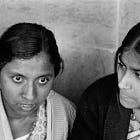Welcome to the Brown History Newsletter. If you’re enjoying this labor of love, please do consider becoming a paid subscriber. Your contribution would help pay the writers and illustrators and support this weekly publication. If you like to submit a writing piece, please send me a pitch by email at brownhistory1947@gmail.com.
Don’t forget to check out our SHOP and our Podcast

Recommended Reads:
How Bombay became the Epicenter of Indian Cinema
“Ae dil hai mushkil jeena yahan/ zara hat ke, zara bachke/ yeh hai Bombay meri jaan”.
("Ah heart, it's difficult to live here / Stay a little aside, be careful / This is Bombay, my dear.")
This is the title song of the 1999 film Yeh Hai Mumbai Meri Jaan, a story about a man searching for work in Mumbai. Lakhs of people migrate to Mumbai even today to make a career in different professions this megacity offers. With its unique blend of economic opportunities, cultural vibrancy and as the financial capital, in comparison to other megacities existing in India, Mumbai offers a wide range of job prospects in industries like finance, media, entertainment, and start-ups, attracting ambitious individuals from across the country. The city's thriving Bollywood industry also makes it a dream destination for those aspiring to careers in film, television, and modeling. Mumbai is fostering a culture of hustle, entrepreneurship, and creativity.
Mumbai is globally recognized for Bollywood, an industry synonymous with commercial films and entertainment, which has successfully represented itself on international platforms, for instance, recently Laapta Ladies had entered in race for the 2025 Oscars (although it didn’t make it through), RRR gained global acclaim, winning the Best Original Song Oscar for "Naatu Naatu" in 2023, and The Elephant Whisperers won Best Documentary Short Subject.
How did this coastal metropolis, once a British colony situated on seven islands, evolve into the birthplace and center of Indian cinema during the colonial era, eventually becoming a world-renowned industry?







![[] []](https://substackcdn.com/image/fetch/$s_!xCBV!,w_1456,c_limit,f_auto,q_auto:good,fl_progressive:steep/https%3A%2F%2Fsubstack-post-media.s3.amazonaws.com%2Fpublic%2Fimages%2F09391b0b-2d1d-4360-96e2-09b77911552d_1280x876.jpeg)